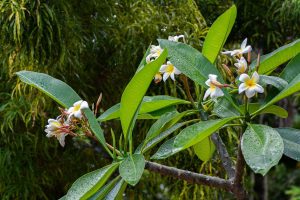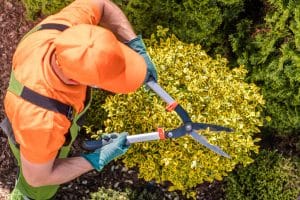Palm trees are a prominent feature of the Houston Heights landscape, bringing a touch of the tropics to our wonderful metropolis. Proper care and maintenance, particularly trimming, are critical to keeping these enormous trees healthy and visually pleasing. In this detailed tutorial, Houston Heights Tree Service looks at the best practices for how to trim palm trees to ensure they survive and improve the aesthetic appeal of your home.
Understanding palm tree trimming
Trimming palm trees is more than just keeping their look. It significantly contributes to their overall health and longevity. Removing dead or dying fronds eliminates potential risks, such as falling branches, and lowers the likelihood of pest infestation. Furthermore, proper trimming can promote faster development and ensure that the tree receives enough sunlight and nutrients.
When should I trim palm trees?
Timing is everything when it comes to cutting palm trees. The ideal time to prune palm trees is in the spring or early summer. This interval allows the trees to recuperate quickly and promotes healthy growth during the growing season. Trimming trees in the winter or fall might expose them to cold damage and disrupt their natural development cycle.
Tools Required for Palm Tree Trimming

Having the proper tools is vital for safe and productive palm tree cutting. Here’s a list of tools you’ll need.
Pruning shears are suitable for fronds that are small to medium in size.
For large fronds that are too thick to cut with pruning shears, loppers are perfect.
A pole saw is used to reach higher branches without the need for a ladder.
Wear gloves, safety glasses, and a hard hat to protect yourself from falling debris,
How to trim a palm tree?
Step-by-step instructions for trimming palms
- Examine the tree
Before you begin cutting, take some time to analyse the tree. Determine which fronds require removal. Examine the fronds for signs of death, withering, damage, discoloration, or insect infestation.
- Prepare your cuts
Plan your cuts carefully to avoid damaging the tree. It is common practice to remove fronds that are below a horizontal line drawn from the crown’s base. Do not trim too close to the trunk because this can injure the tree and make it more susceptible to disease.
- Reduce dead and dying fronds
Begin by removing dead and decaying fronds. use pruning shears or loppers for smaller fronds, and use a pole saw for higher or thicker branches, To avoid damaging the bark, make smooth cuts instead.
- Remove seed pods and flowers
Removing seed pods and blossoms can help reduce trash and encourage healthy growth. These sections typically deplete the tree’s energy and attract bugs. Using your tools, carefully cut them away from the base.
- Avoid over-trimming
Over-trimming can harm the health of a palm tree. Avoid removing too many green fronds, and necessary for photosynthesis and overall health. A wise rule is to never trim more than 15% of the tree’s green fronds in a single session.
- Clean up the debris
After trimming, make sure to clear up any debris near the tree’s base. This approach prevents pest infestations while also maintaining your landscape’s visual attractiveness.
Safety Tips for Palm Tree Trimming
When cutting palm trees, safety should always come first. Here are some ways to help you stay safe:
Always wear suitable safety equipment, such as gloves, safety glasses, and a hard hat.
Never trim palm trees in windy or rainy conditions.
If the tree is too big or the fronds are too thick, consider contacting a professional tree service to avoid an accident.
When pruning high branches, be mindful of power wires and other potential risks.
Benefits of hiring professionals to trim palm trees
While DIY pruning is an option, there are several advantages to hiring professional palm tree trimming services:
Expertise: Professionals have the skills and experience to properly trim palm trees, ensuring their health and lifespan.
Safety: Trained arborists use specialised equipment and adhere to safety regulations to avoid accidents.
Efficiency: Professional services can execute tasks swiftly and efficiently, saving time and effort.
Avoid these common mistakes while trimming palm trees
Avoiding common blunders can make a significant difference in the health and beauty of your palm trees.
Over-trimming: Removing too many fronds can stress the tree and slow its growth.
Improper cuts: cutting too close to the trunk or leaving stubs exposes the tree to diseases and pests.
Ignoring Safety: In inclement weather, failure to use safety equipment or trim can cause accidents.
FAQS
How often should I trim my palm trees?
Depending on their growth rate and condition, palm trees should undergo pruning once or twice a year.
Can I cut down my palm tree during the winter?
Avoid trimming palm trees during the winter, as it exposes them to cold damage and inhibits their growth.
What should I do with the debris after trimming?
To prevent pest infestations and keep the landscape clean, remove all debris near the tree’s base.
Will over-trimming damage my palm tree?
Excessive trimming might put the tree under stress and cause it to decline. Always adhere to the rule of not removing more than 15% of green fronds at a time.
Should I engage a professional for palm tree trimming?
Employing a professional ensures a safe and accurate completion of the task, thereby preserving the health and aesthetic appeal of your palm trees.
Conclusion
Proper palm tree trimming is vital for the health and beauty of Houston Heights’ renowned trees. Following the best practices mentioned in this article will ensure that your palm trees grow and continue to improve your property’s aesthetic appeal. Remember, safety and precision are essential, and if in doubt, seek professional tree services.




